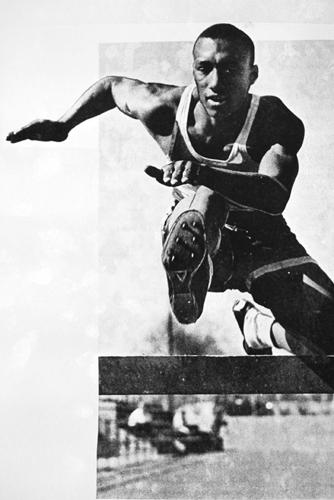May 5, 1939: Tucson High’s Joe Batiste breaks his own national record
For most of the day before the 1939 state track and field championships, the Arizona Interscholastics Association argued about the eligibility of Tucson High athlete Joe Batiste.
The AIA had been told Batiste was 20, which was too old for him to be eligible. But Tucson High had a birth certificate showing Batiste’s age as 19.
Batiste was one of the top high school athletes in the nation in the 1930s. He set a national prep record of 14.5 seconds in the high hurdles, and, remarkably, high-jumped 6 feet 6½ inches when the world record was 6-8.
Once the AIA accepted Batiste’s birth certificate, he was approved to run in the state meet at Arizona Stadium. He didn’t disappoint. He lowered his U.S. record in the high hurdles from 14.5 to 14.0, a record that would stand for 18 years.
More? He was also the Arizona football Player of the Year in 1938.
Batiste was so popular that the state track meet was broadcast on two radio stations, Tucson’s KVOA and Phoenix’s KTAR.
On the day of the 1939 state track meet, the Arizona Daily Star wrote: “Joe is conceded an excellent chance of lowering his national high school record tonight.”
Unfortunately, neither the UA nor ASU recruited Batiste. Neither school had to that point deployed an African-American athlete in any sport.
So Batiste enrolled at Sacramento Junior College and began training for the 1940 Olympics. His only other scholarship offer was from Oklahoma Baptist.
Sacramento coach L.W. Weldon, who would later coach Bruce Jenner to the 1976 Olympic decathlon medal, said he thought Batiste could be a gold medalist in the decathlon.
In the summer of 1939, Batiste upset reigning NCAA high hurdles champion Fred Wolcott of Rice in an AAU meet in Lincoln, Nebraska. He ran in the heavily contested Compton Relays early that summer, against Pacific Coast champion James Humphrey of USC, losing in a neck-and-neck finish to the Trojans’ standout. He later won a high hurdles race against 1936 Berlin Olympic hurdler Joe Staley.
But because the Olympics were canceled by World War II in 1940 and 1944, Batiste became little more than a regional legend. He led Sacramento JC to national track championships in 1941 and 1942, and then enlisted in the Army.
For what it mattered, the AAU named him to the “mythical” USA Olympic team of 1940 and 1944 as a decathlete.
When Batiste was discharged in 1945, he had gained about 25 pounds. He enrolled at ASU and was part of the Sun Devils’ track team, but no longer a world-class athlete.
Batiste was part of what was probably the most skilled athletic family in Tucson history.
Older brother Ernie built a jumping pit in the family backyard near South Stone Avenue. Ernie, who was a standout football player of the 1930s, was not allowed to play football at Tucson High because African-Americans were not permitted to play contact sports. He broke his neck while playing sandlot football while at Tucson High.
Younger brother Frank enrolled at Compton College and set California JC records in the low and high hurdles.
The oldest Batiste brother, Fred, became the first African-American football letterman in UA history. Fred was both the Arizona prep football and track player of the year while at Tucson High.
Where are they now? After leaving ASU, Joe Batiste was arrested several times, for, among other things, drunkenness and burglary. In 1957, he was hospitalized for alcoholism and liver problems. He died in February 1958. He was 38.
How he did it: After winning an AAU national track meet and setting the American record for high school age hurdlers, Batiste returned to the Tucson train station and was greeted by several hundred people in 1938. An impromptu parade was held in downtown Tucson.





